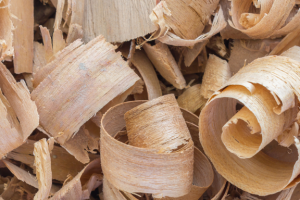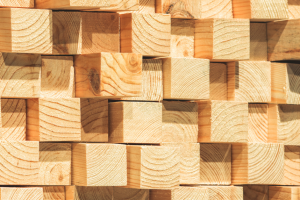Sales of locally produced sawn softwood products moderated year-ended September but remain effectively at peak, as sales associated with fire salvage logs reportedly came to a halt.
Sales totalled 2.98 million m3 for the year-ended September, down 2.9% on a year earlier, while monthly sales were above the long-term average range at 279,516 m3.

To go straight to the dashboard and take a closer look at the data, click here.
As we have discussed previously, with production at something approximating peak, the mix or balance of products is changing. There are a variety of complex possible reasons for the product balances changing, not least being the log supply, where the case in point includes a period in which salvage logs were available.
In that context, the chart below shows the last five years’ data for years ended September and the balances shifting from some grades, to others.

To go straight to the dashboard and take a closer look at the data, click here.
|
Softwood Timber Survey, Volume, Year End rolling Monthly – By Type |
|||||||
|
2016M09 |
2017M09 |
2018M09 |
2019M09 |
2020M09 |
2021M09 |
CAGR 5 |
|
|
Outdoor Domestic |
264,218 |
268,236 |
247,832 |
239,522 |
284,246 |
304,176 |
2.9% |
|
Fencing |
90,256 |
99,348 |
118,864 |
89,940 |
107,670 |
106,783 |
3.4% |
|
Appearance |
14,789 |
17,737 |
14,086 |
16,067 |
18,738 |
21,831 |
8.1% |
|
Structural < 120mm |
748,026 |
776,388 |
737,264 |
655,950 |
734,385 |
656,312 |
-2.6% |
|
Structural > 120mm |
57,447 |
64,779 |
65,242 |
55,742 |
58,701 |
58,581 |
0.4% |
|
Treated Structural < 120mm |
669,395 |
718,098 |
747,089 |
621,989 |
639,341 |
714,627 |
1.3% |
|
Treated Structural > 120mm |
78,707 |
67,706 |
52,324 |
45,440 |
51,949 |
66,596 |
-3.3% |
|
Landscaping |
148,409 |
154,234 |
157,096 |
126,679 |
136,562 |
112,954 |
-5.3% |
|
Poles |
27,959 |
30,220 |
32,775 |
33,583 |
41,578 |
32,315 |
2.9% |
|
Packaging |
513,444 |
502,646 |
550,664 |
579,955 |
615,716 |
630,495 |
4.2% |
|
Ungraded |
276,425 |
276,282 |
310,142 |
272,727 |
266,311 |
222,438 |
-4.3% |
|
Export |
210,850 |
208,713 |
127,396 |
92,846 |
119,274 |
58,974 |
-22.5% |
|
Total |
3,099,925 |
3,184,387 |
3,160,774 |
2,830,440 |
3,074,471 |
2,986,082 |
-0.7% |
Over the course of the last five years, some grades have experienced continual declines – Export is the prominent example. But other significant grades have increased consistently.
While the emphasis is often on the Structural grades – they drive the sector and the housing economy after all – recent attention has been on what were once secondary grades. In that respect, it is difficult to avoid the Packaging grade, which at 630,495 m3 year-ended September has grown an average 4.2% per annum over the last five years, is the third largest local sales grade and accounted for 21.1% of total sales for the year.
The other grade for which sales are above 10% of the total and for which growth has been solid and consistent for the most part is the ‘Outdoor Domestic’ designation. With annual sales topping 300,000 m3 for the first time and pushing out to 304,176 m3, the Outdoor Domestic grade has booked average annual sales increases of 2.9% over the five years and accounted for 10.2% of total sales over the last year.
It is important however to return to the heart of the matter – structural timber. Of the two main structural grades – treated and untreated <120mm – it is clear an exchange is underway and continuing between them. Structural <120 mm (the untreated product) saw sales fall year-ended September, declining 10.6% to 656,312 m3, while sales of Treated Structural <120mm saw sales lift 11.8% to 714,627 m3, to hold a decisive position as the major grade for local sales.
Combined, the two main structural grades accounted for 45.9% of total sales year-ended September, with the larger dimension equivalents adding a further 4.4%.
All this can be observed in the pie chart below.

Interchange between structural untreated <120mm down -10.63% while structural treated <120mm up +11.78%.



